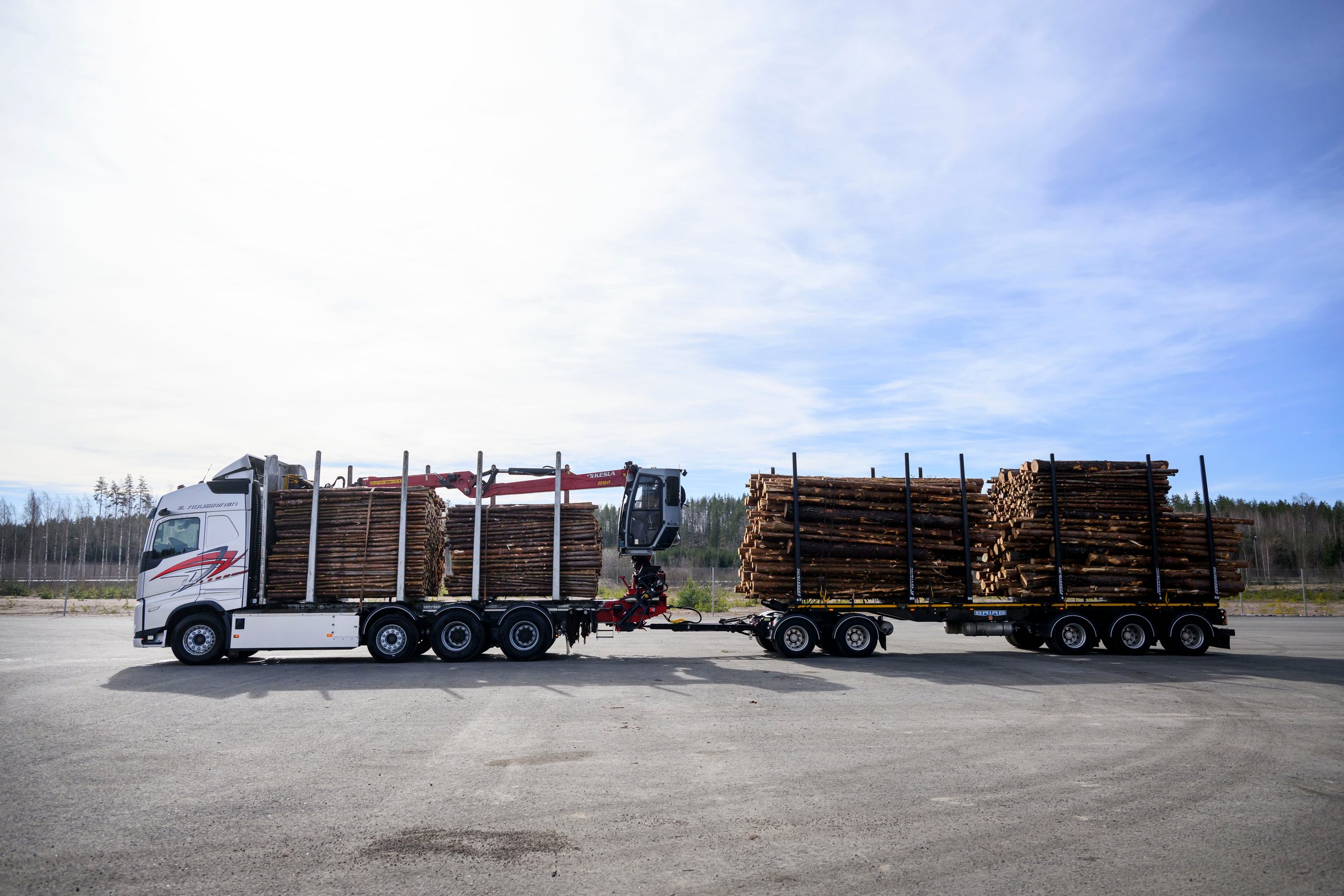“Biogas technology has been available for some time, and the forest industry’s emissions reduction needs are becoming increasingly urgent. We wanted to be among the forerunners,” says entrepreneur Antti Nousiainen.
The company acquired a Volvo FH 500 LBG lorry. According to the entrepreneur, it is the only option on the market with enough power for near-maximum loads. The combined vehicle has a total weight of 75 tonnes, and the maximum weight allowed in Finland is 76 tonnes. The new vehicle is used for Metsä Group’s wood transports in the Sipoo and Porvoo area, from where transports move to Lohja, Renko and Lappeenranta.
The biogas lorry cost around 50,000 euros more than a similar diesel-powered vehicle, but the investment has proved profitable. Fuel costs have been a positive surprise, and emissions are significantly lower. “The distribution network still limits operations, but we can operate well in this area,” says Nousiainen.
Liquefied biogas (LBG), a domestic renewable alternative to fossil fuels, is used for refuelling. Liquefied biogas is produced from biowaste, manure, sewage sludge and other side streams, for example.
On a full tank, the combined vehicle can cover approximately 500 kilometres. When refuelling, biogas is at a temperature of -160 °C, so the driver must wear a face mask and heat-insulating gloves for safety.

Good experiences with the first biogas lorry
According to Nousiainen, the decision to switch to biogas matured in 2023, and he ordered the vehicle last spring, supported by Metsä Group’s recommendation. The lorry arrived from Sweden, and 20,000 kilometres later, the experiences are positive.
“Where handling characteristics are concerned, the lorry is no different from a diesel vehicle. At first, drivers were concerned about refuelling, for example, but everything has gone smoothly,” says Nousiainen.
According to Nousiainen, an investment in another biogas lorry is already being planned.
“Our goal is to get the next vehicle in 2026 and a third in 2027.”
More biogas vehicles will be acquired as the refuelling network expands. LNG filling stations are currently being planned in Central Finland especially. For example, a new station will be built in Hirvaskangas near Metsä Group’s Äänekoski mill area.
According to Nousiainen, biogas now definitely makes more sense than diesel.
“Just five years ago, I believed diesel was the most cost-effective solution, but development has progressed rapidly. The economy of refuelling has especially surprised me,” he says.
Metsä Group aims to reduce fossil-based carbon dioxide emissions from wood supply by 30 per cent from the 2022 level by 2030. As a significant part of the emissions are generated by wood transport, the reduction targets focus especially on transport emissions.
According to the company, the use of electric and biogas lorries will be a key part of the emissions reduction measures. In addition to E. Nousiainen, another Metsä Group partner, Konnegroup, previously introduced a biogas lorry for the transport of wood chips and by-products.
Read more about Metsä Group’s efforts to reduce fossil-based carbon emissions from wood supply.
Text Maria Latokartano
Photo Jussi Helttunen
This article was originally published in Metsä Group’s Viesti magazine 1/2025.
